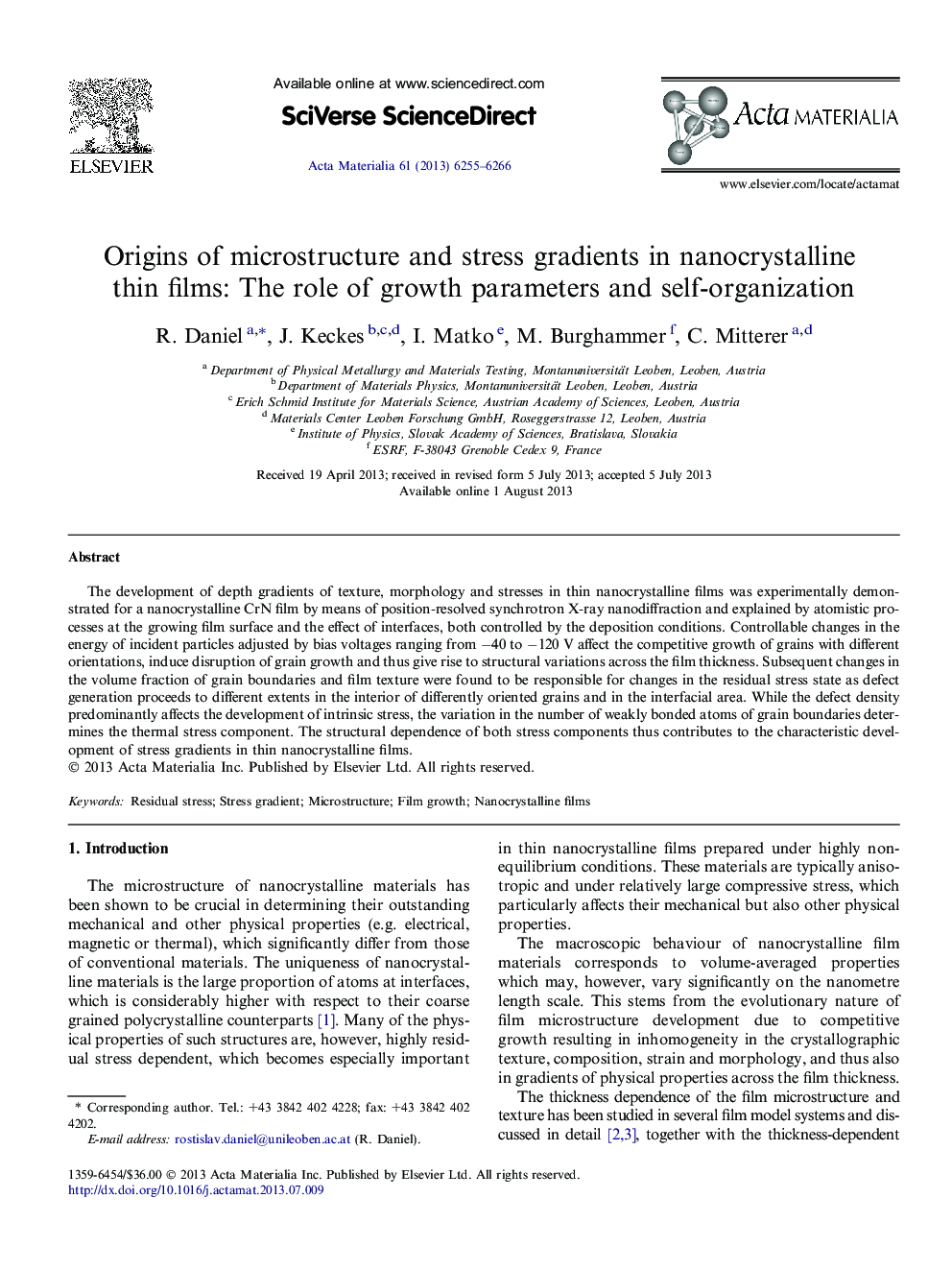| Article ID | Journal | Published Year | Pages | File Type |
|---|---|---|---|---|
| 1445879 | Acta Materialia | 2013 | 12 Pages |
The development of depth gradients of texture, morphology and stresses in thin nanocrystalline films was experimentally demonstrated for a nanocrystalline CrN film by means of position-resolved synchrotron X-ray nanodiffraction and explained by atomistic processes at the growing film surface and the effect of interfaces, both controlled by the deposition conditions. Controllable changes in the energy of incident particles adjusted by bias voltages ranging from −40 to −120 V affect the competitive growth of grains with different orientations, induce disruption of grain growth and thus give rise to structural variations across the film thickness. Subsequent changes in the volume fraction of grain boundaries and film texture were found to be responsible for changes in the residual stress state as defect generation proceeds to different extents in the interior of differently oriented grains and in the interfacial area. While the defect density predominantly affects the development of intrinsic stress, the variation in the number of weakly bonded atoms of grain boundaries determines the thermal stress component. The structural dependence of both stress components thus contributes to the characteristic development of stress gradients in thin nanocrystalline films.
